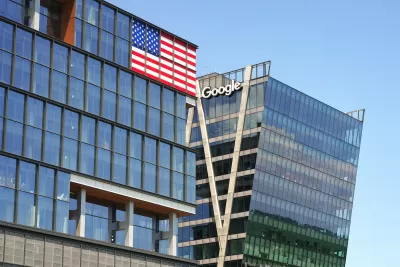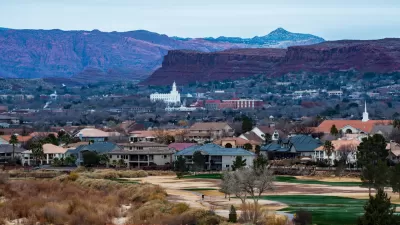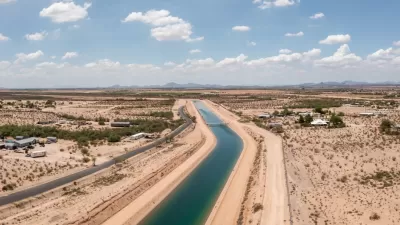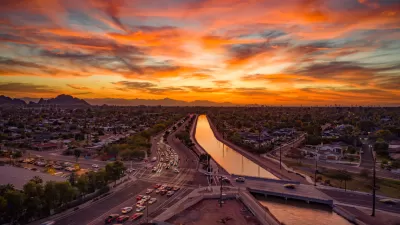Being the world’s largest data center hub is having a severe impact on local water resources.

Data centers in Northern Virginia are using “absurd amounts of water” to power cooling systems, writes Sachi Kitajima Mulkey in Grist, causing concern among local officials.
The region is the world’s largest data center hub, with over 300 facilities processing almost 70 percent of global digital information, each using as much as 5 million gallons of water per day. And because cooling methods often rely on evaporation, the water does not go back into wastewater systems. “Data centers rank among the top 10 water-consuming industries in the United States, according to a 2021 study from Virginia Tech that looked at their environmental cost. And the next generation of technology will only make these facilities thirstier, as servers that run AI algorithms generate more heat.”
A bill introduced in the Virginia state legislature that would hold companies accountable for their environmental impact failed to pass this year, postponing its Senate vote to 2025.
FULL STORY: The surging demand for data is guzzling Virginia’s water

Manufactured Crisis: Losing the Nation’s Largest Source of Unsubsidized Affordable Housing
Manufactured housing communities have long been an affordable housing option for millions of people living in the U.S., but that affordability is disappearing rapidly. How did we get here?

Americans May Be Stuck — But Why?
Americans are moving a lot less than they once did, and that is a problem. While Yoni Applebaum, in his highly-publicized article Stuck, gets the reasons badly wrong, it's still important to ask: why are we moving so much less than before?

Using Old Oil and Gas Wells for Green Energy Storage
Penn State researchers have found that repurposing abandoned oil and gas wells for geothermal-assisted compressed-air energy storage can boost efficiency, reduce environmental risks, and support clean energy and job transitions.

Greening Oakland’s School Grounds
With help from community partners like the Trust for Public Land, Oakland Unified School District is turning barren, asphalt-covered schoolyards into vibrant, green spaces that support outdoor learning, play, and student well-being.

California Governor Suspends CEQA Reviews for Utilities in Fire Areas
Utility restoration efforts in areas affected by the January wildfires in Los Angeles will be exempt from environmental regulations to speed up the rebuilding of essential infrastructure.

Native American Communities Prepare to Lead on Environmental Stewardship
In the face of federal threats to public lands and conservation efforts, indigenous groups continue to model nature-centered conservation efforts.
Urban Design for Planners 1: Software Tools
This six-course series explores essential urban design concepts using open source software and equips planners with the tools they need to participate fully in the urban design process.
Planning for Universal Design
Learn the tools for implementing Universal Design in planning regulations.
Heyer Gruel & Associates PA
City of Moreno Valley
Institute for Housing and Urban Development Studies (IHS)
City of Grandview
Harvard GSD Executive Education
Salt Lake City
NYU Wagner Graduate School of Public Service
City of Cambridge, Maryland





























